











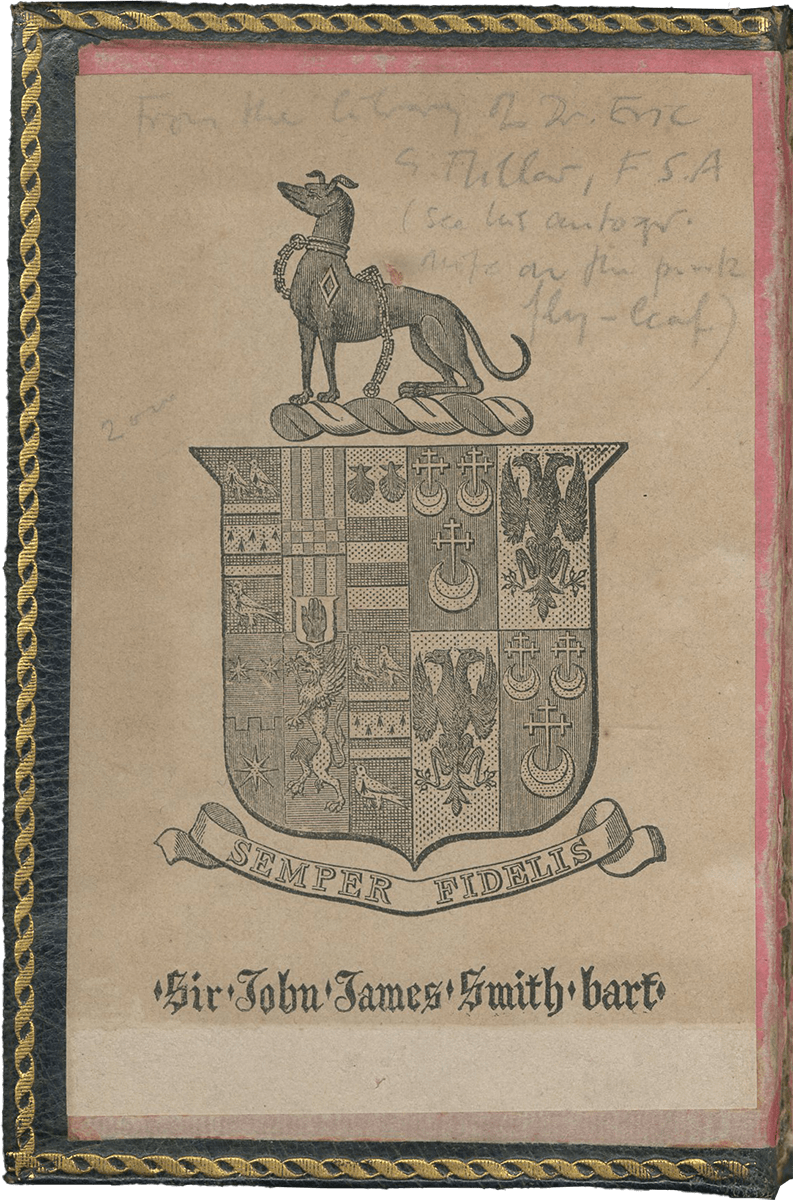
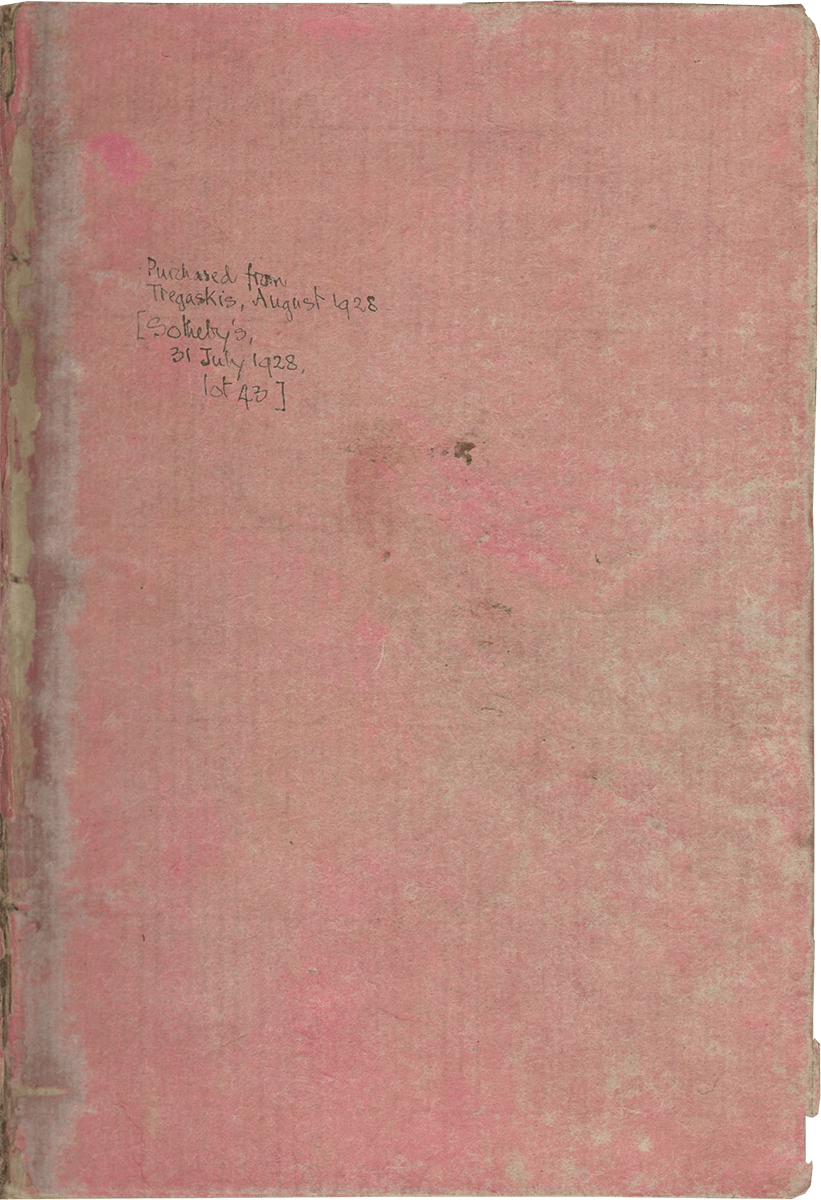
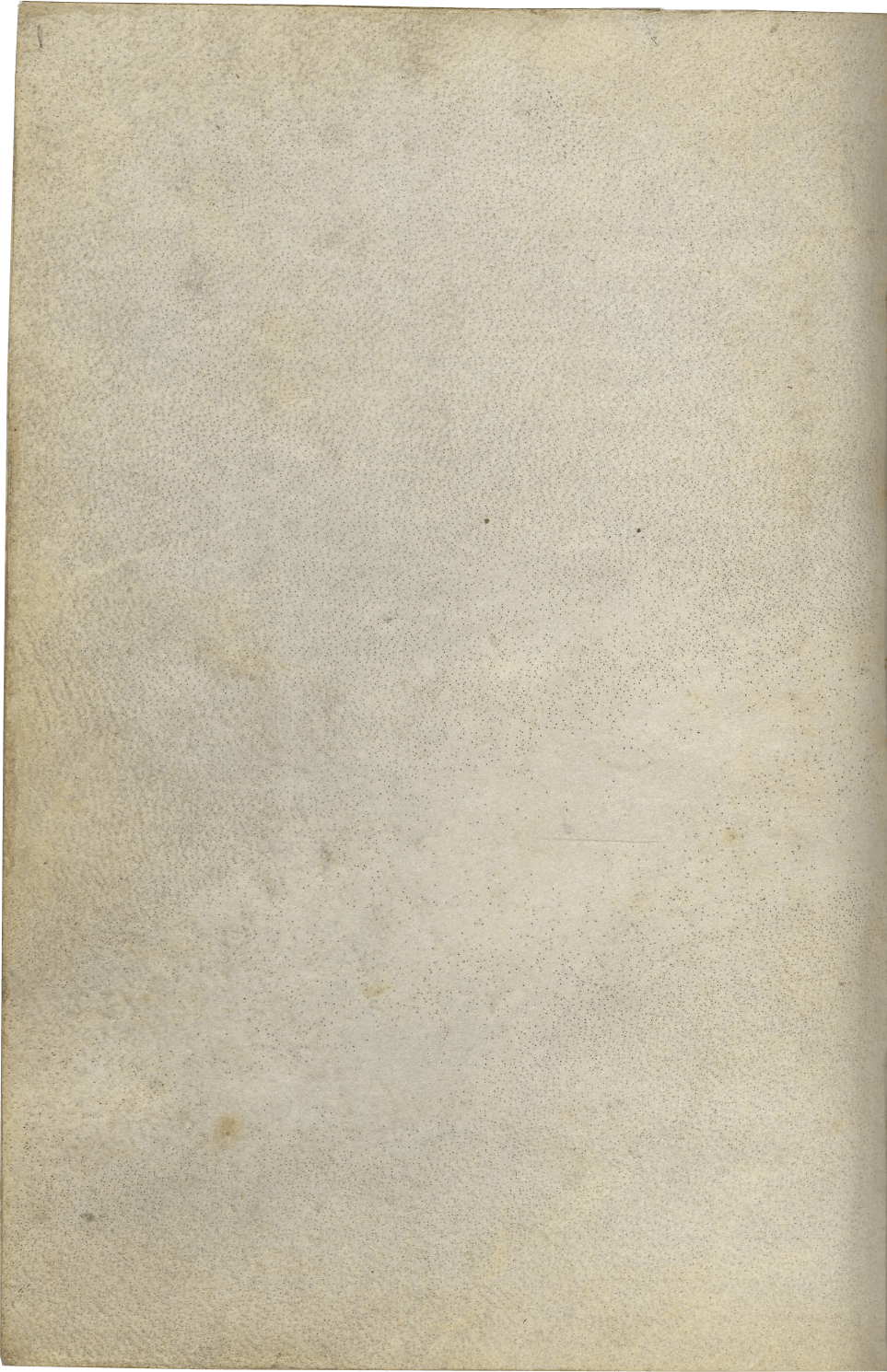
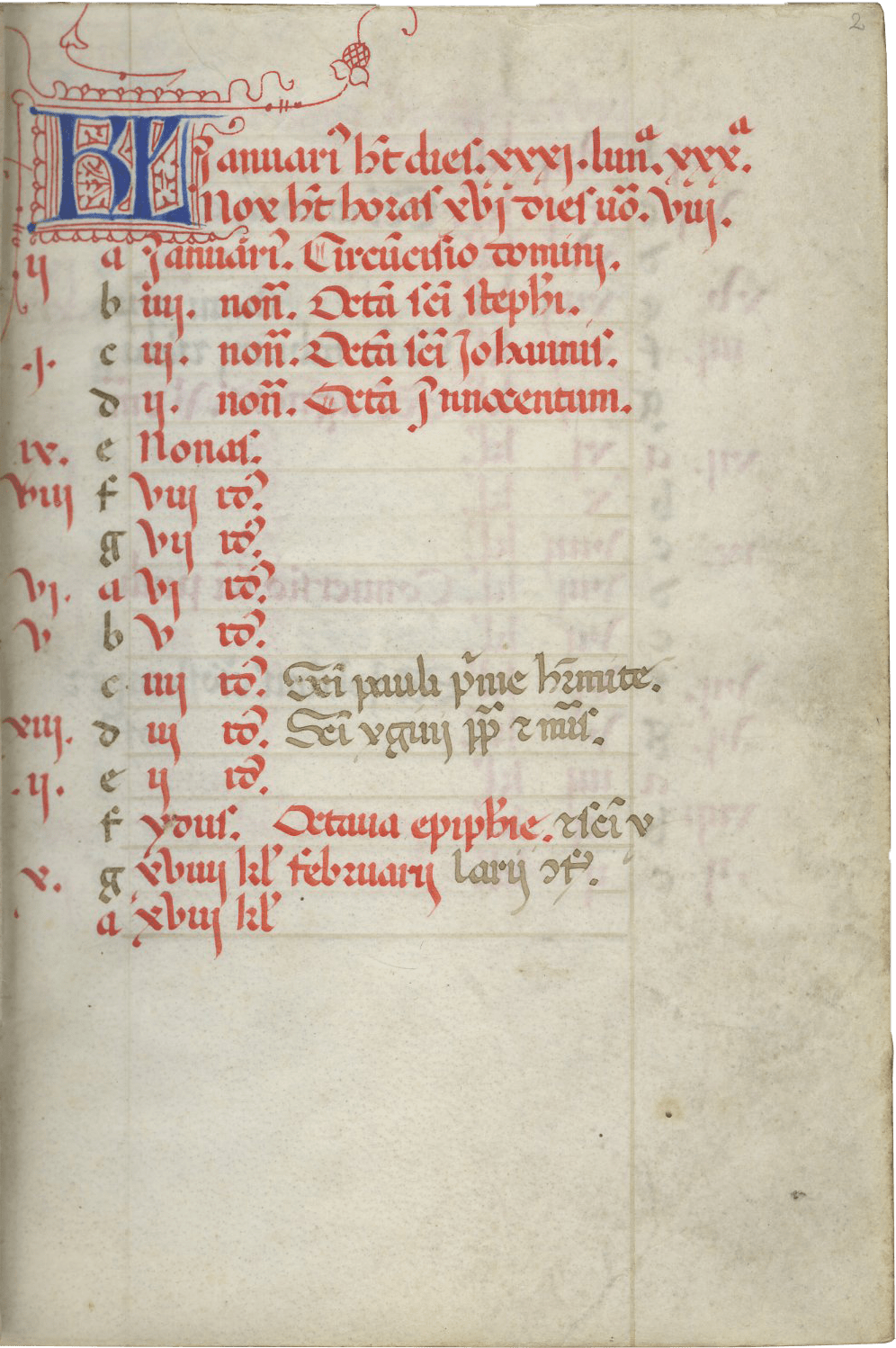
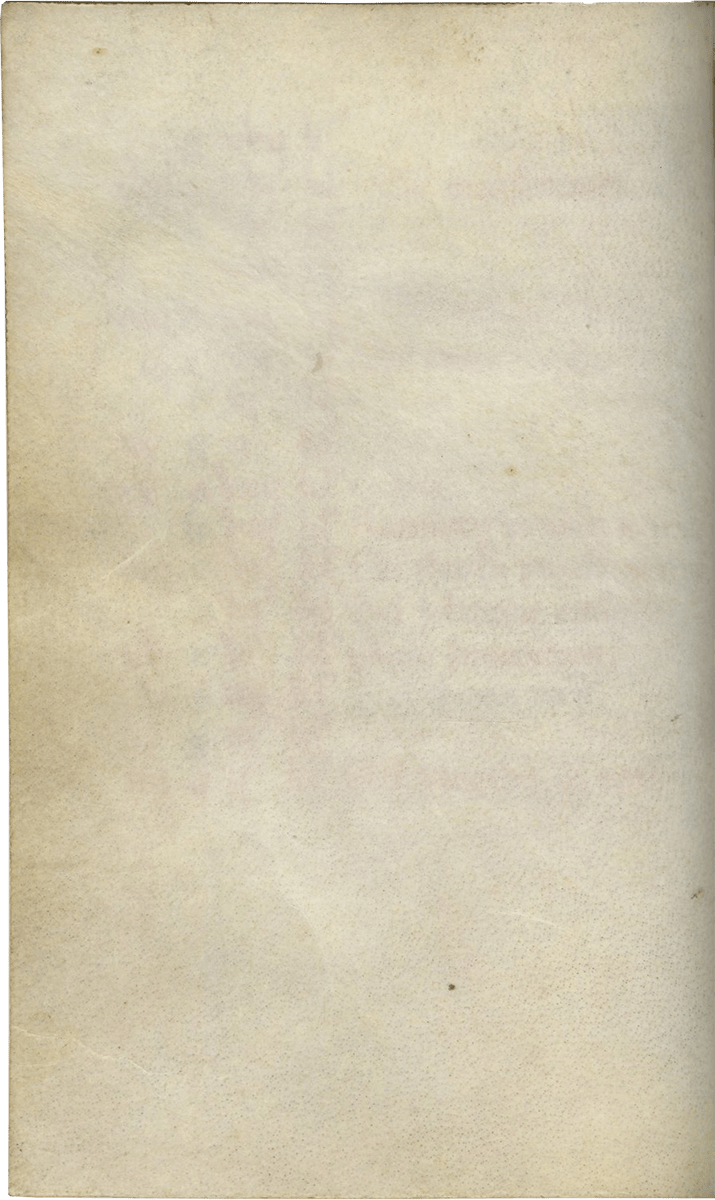


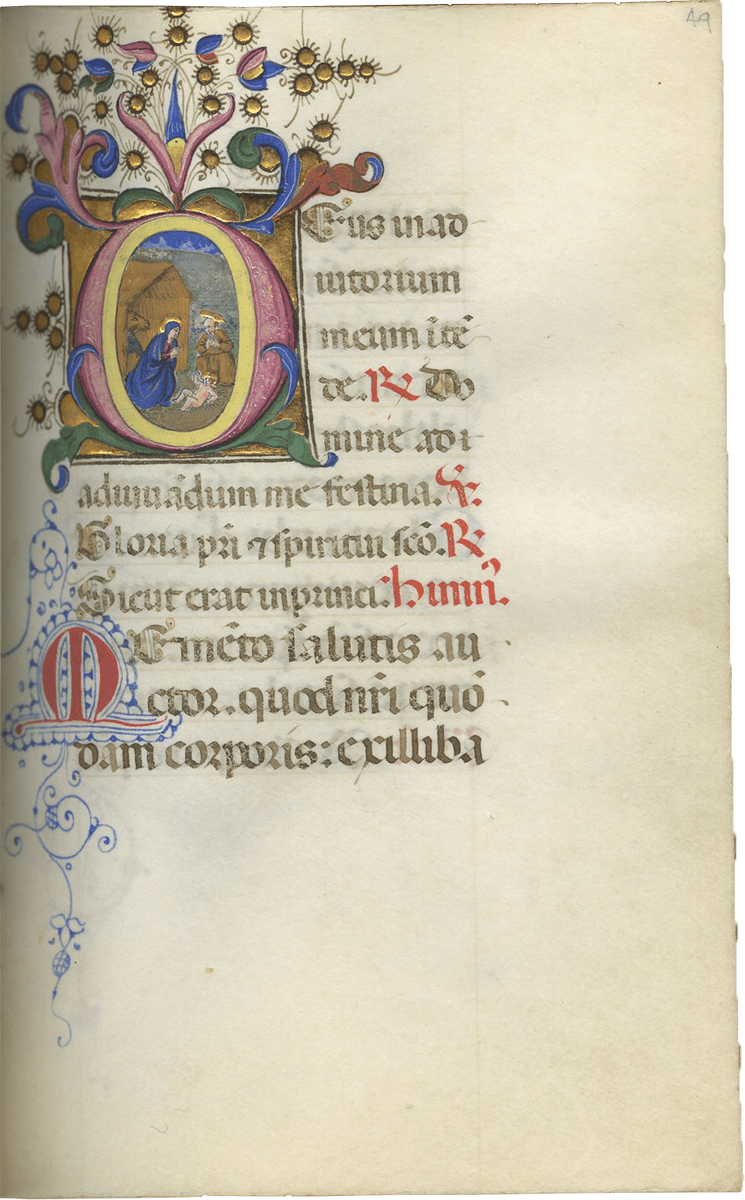
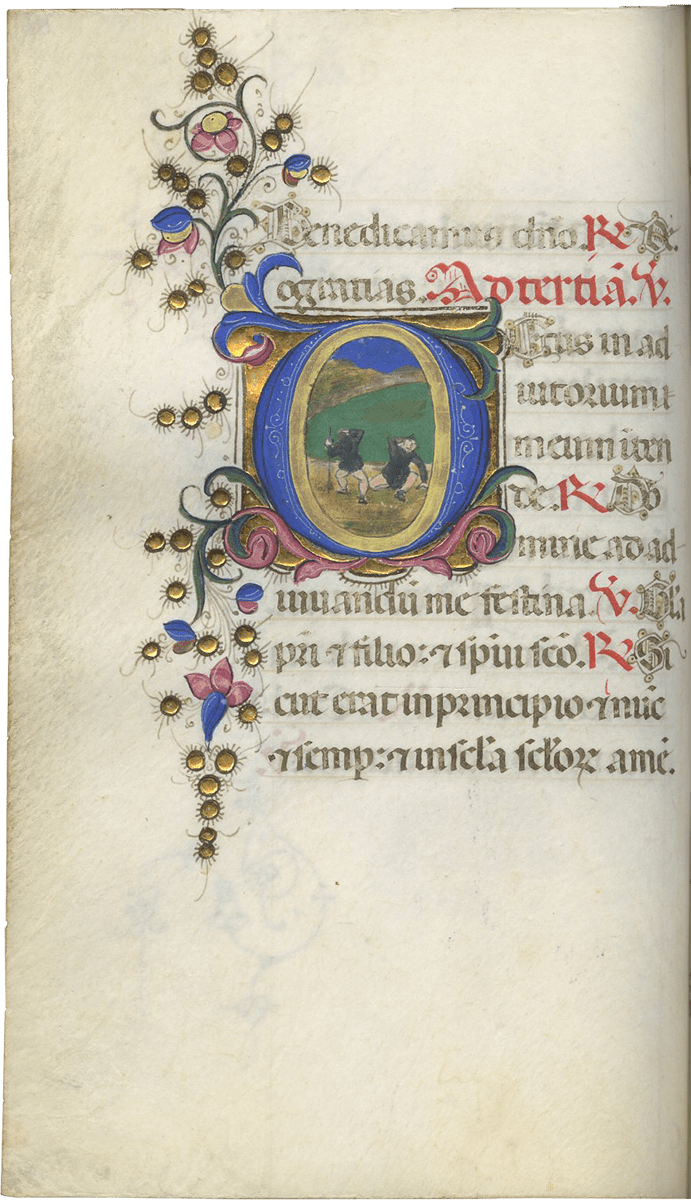
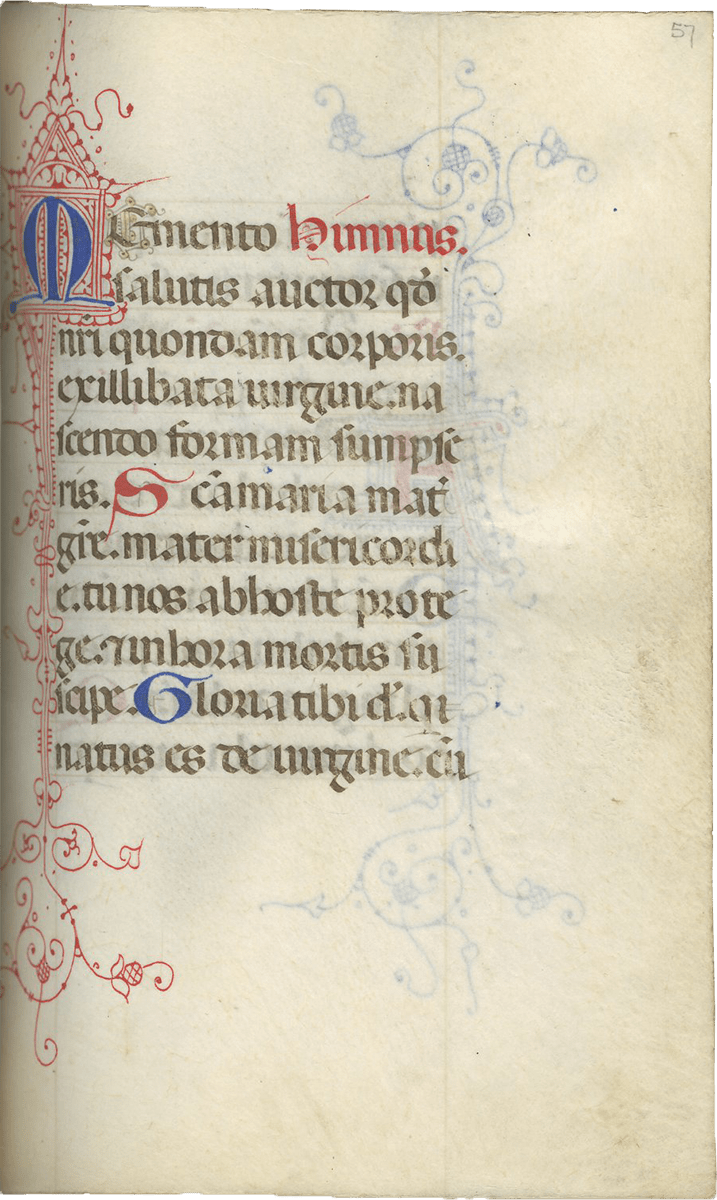
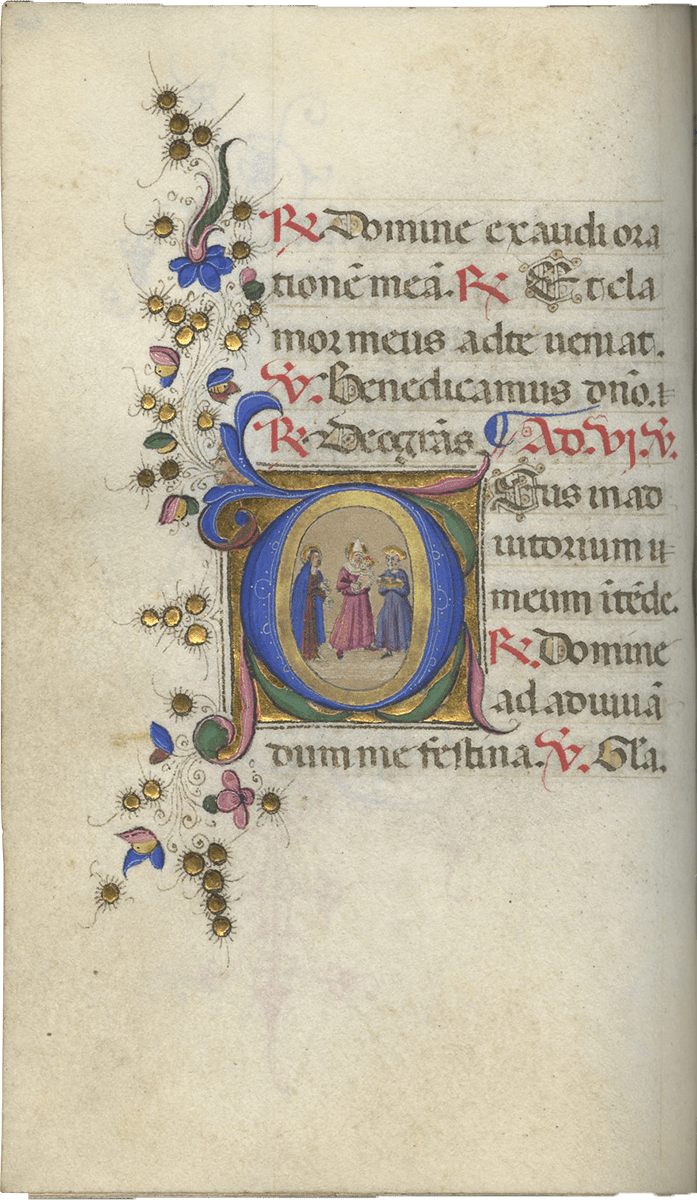
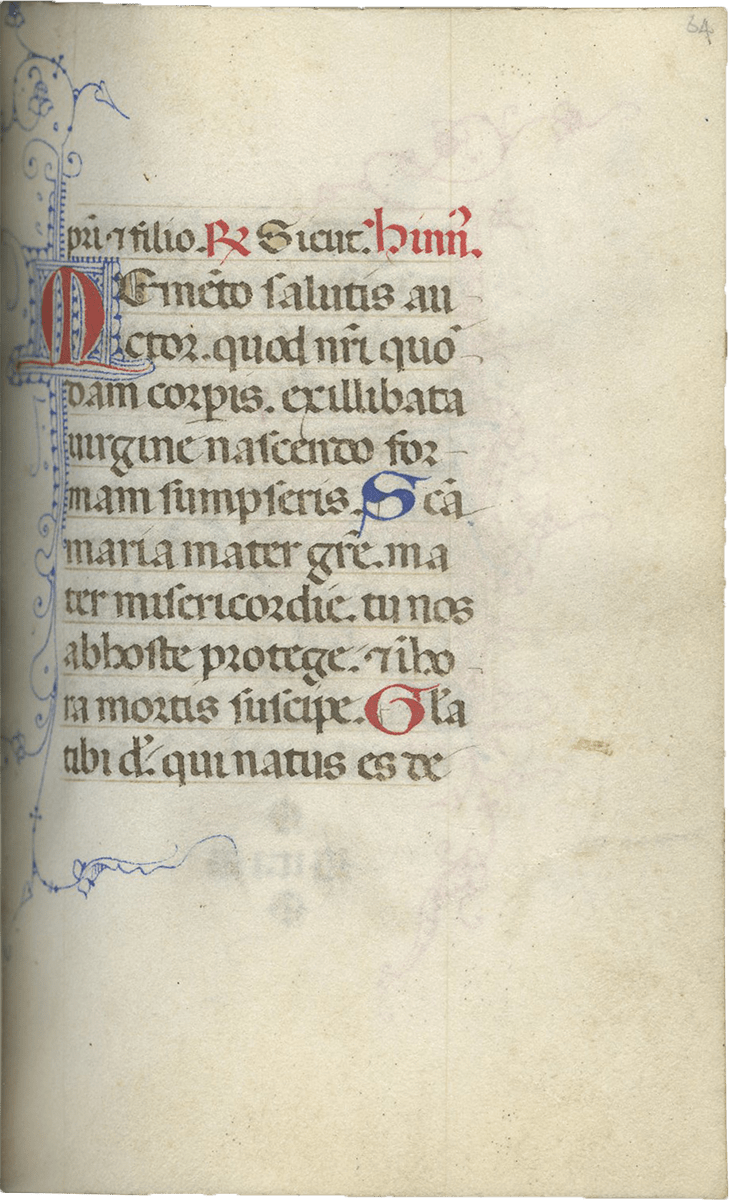


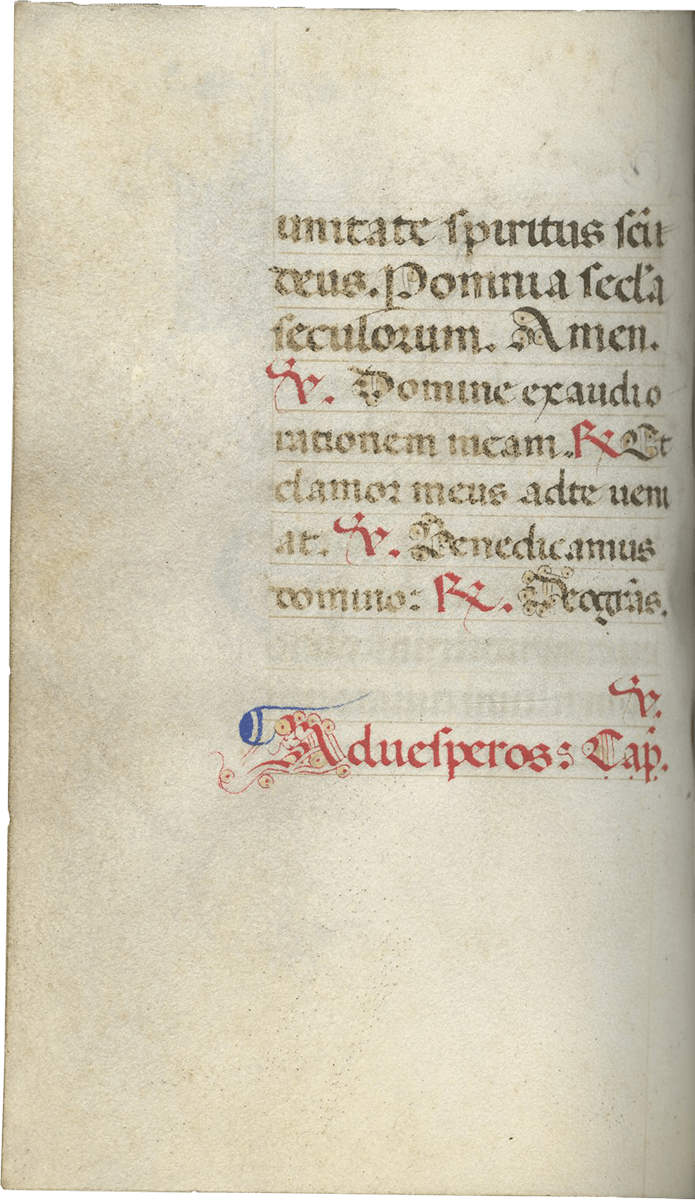
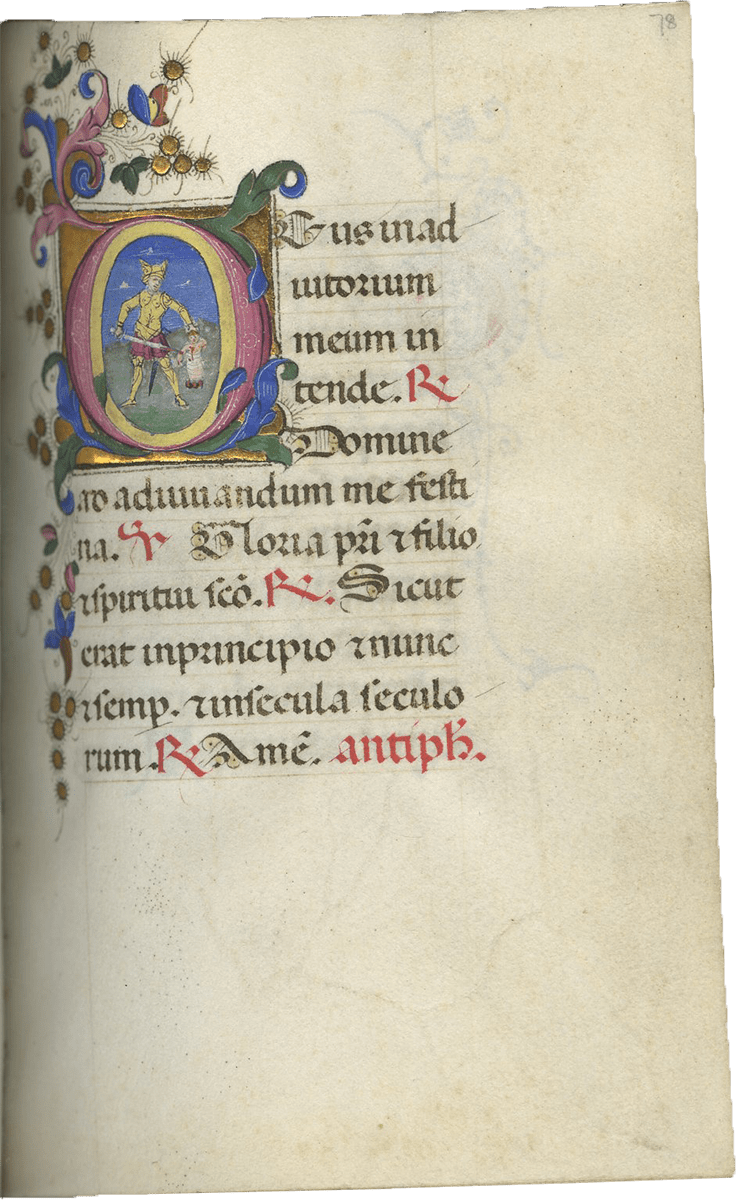
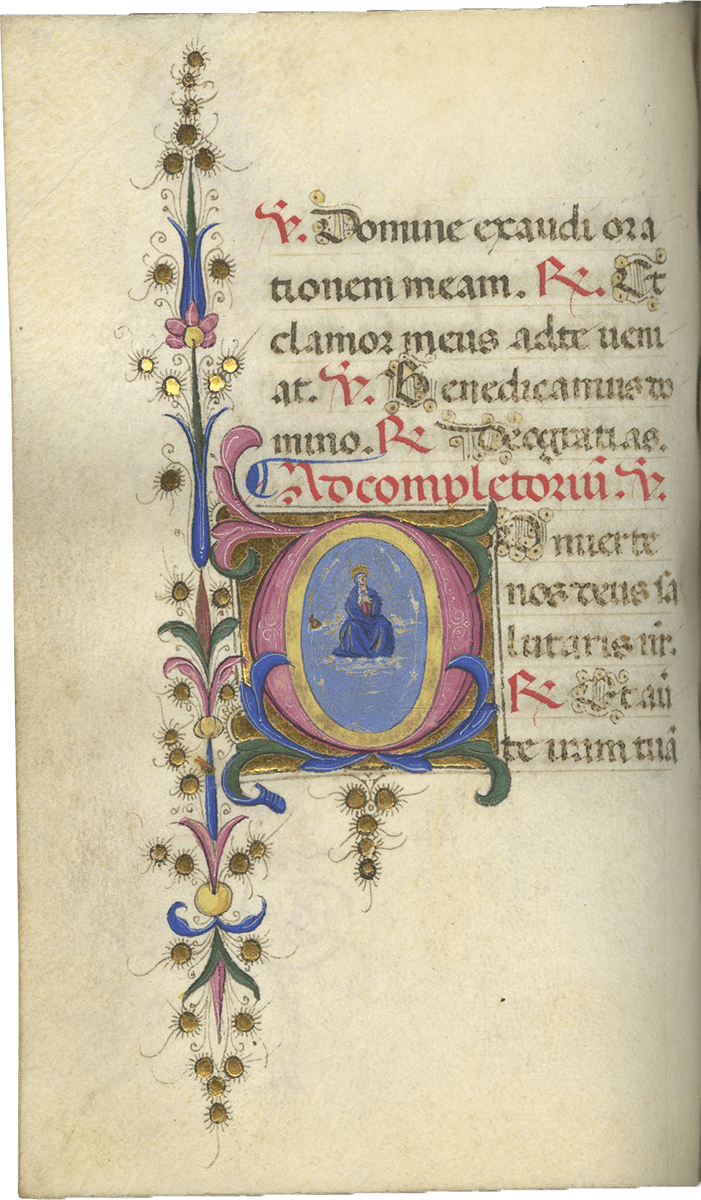

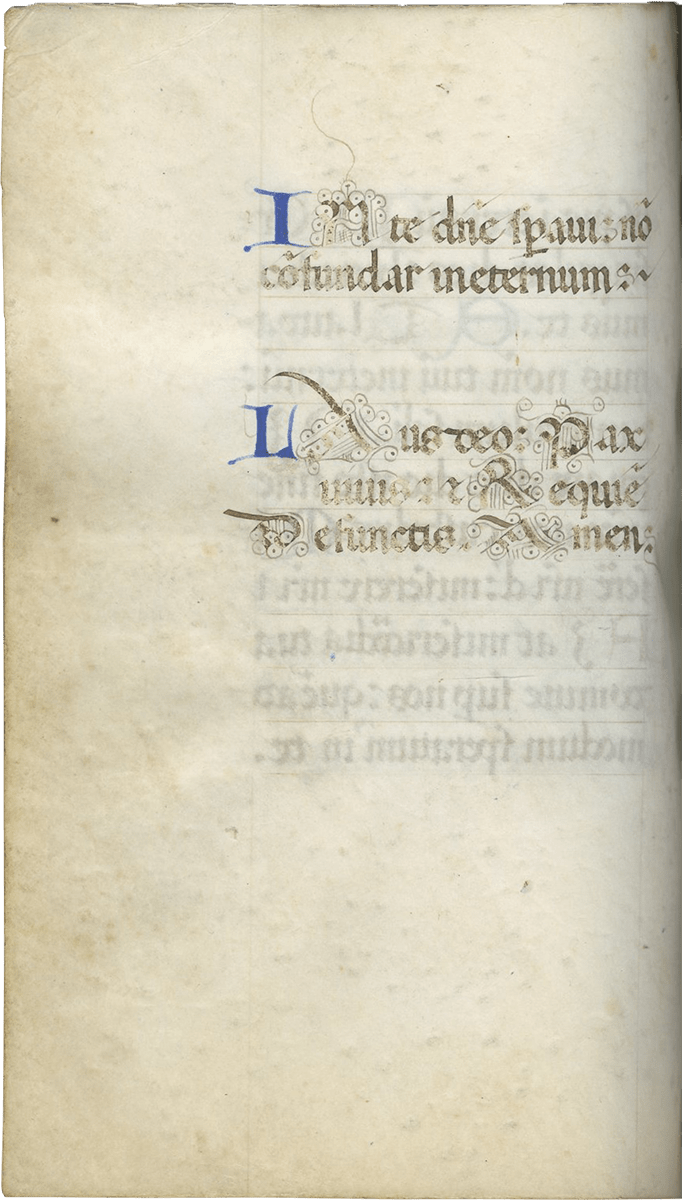
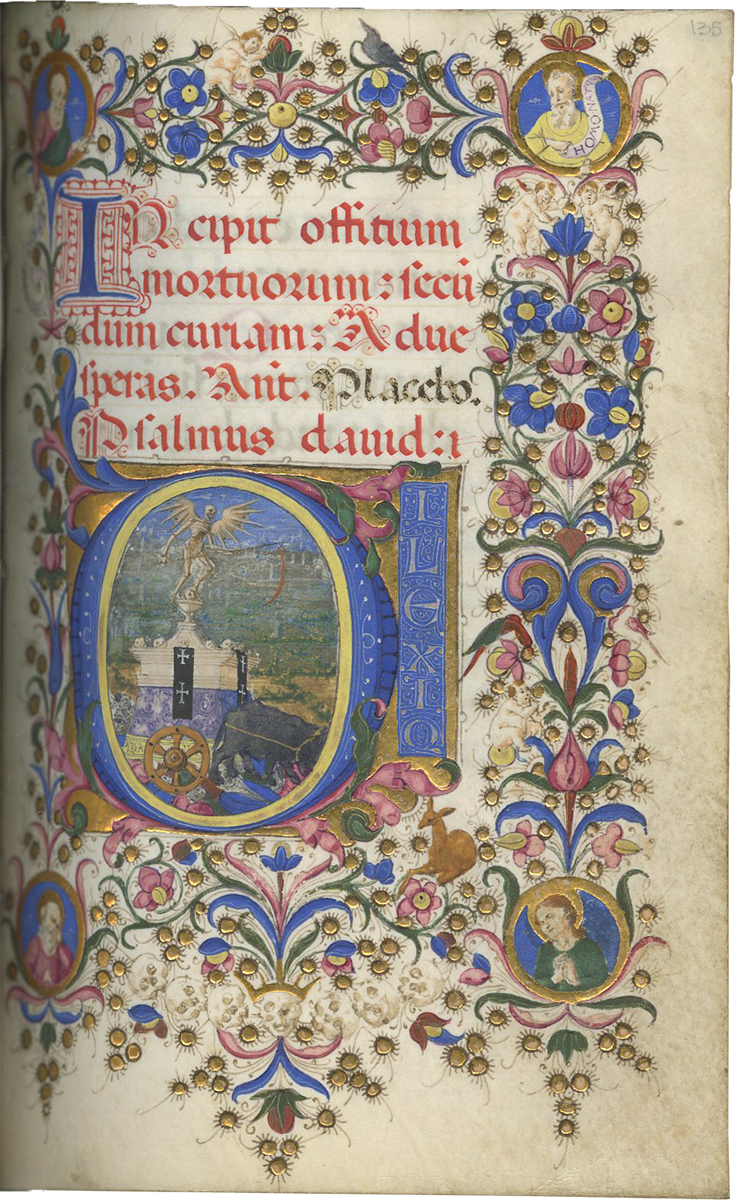
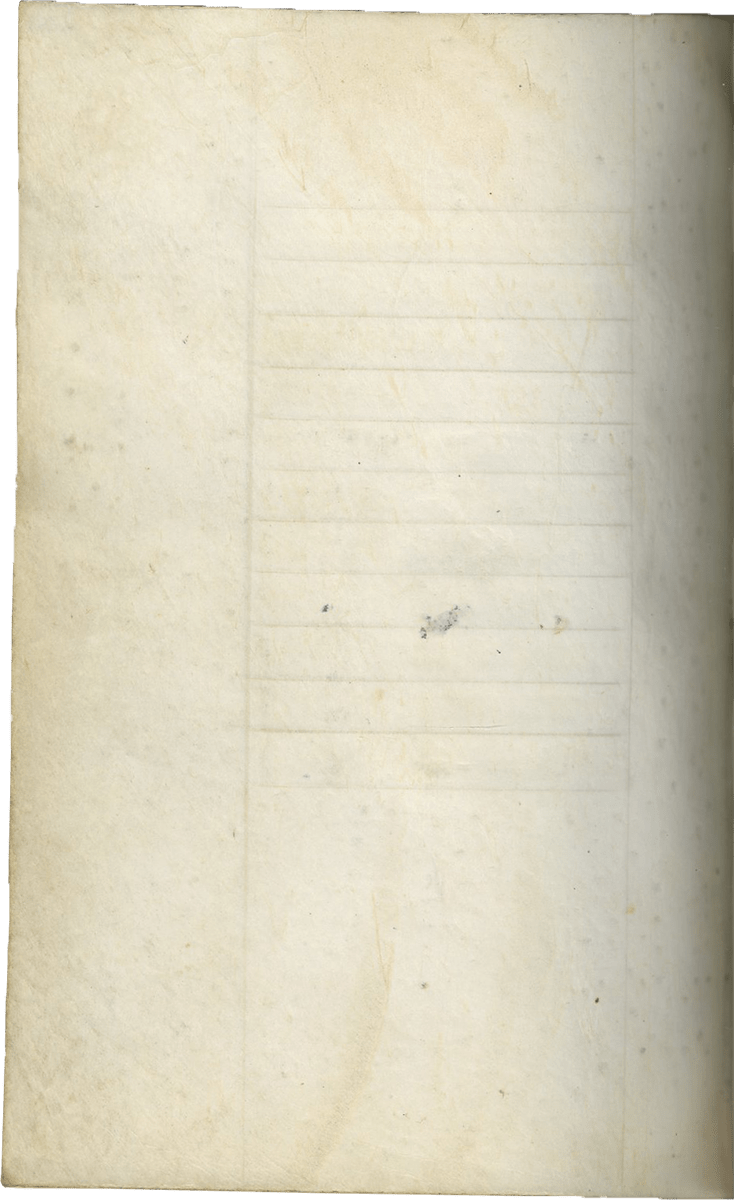
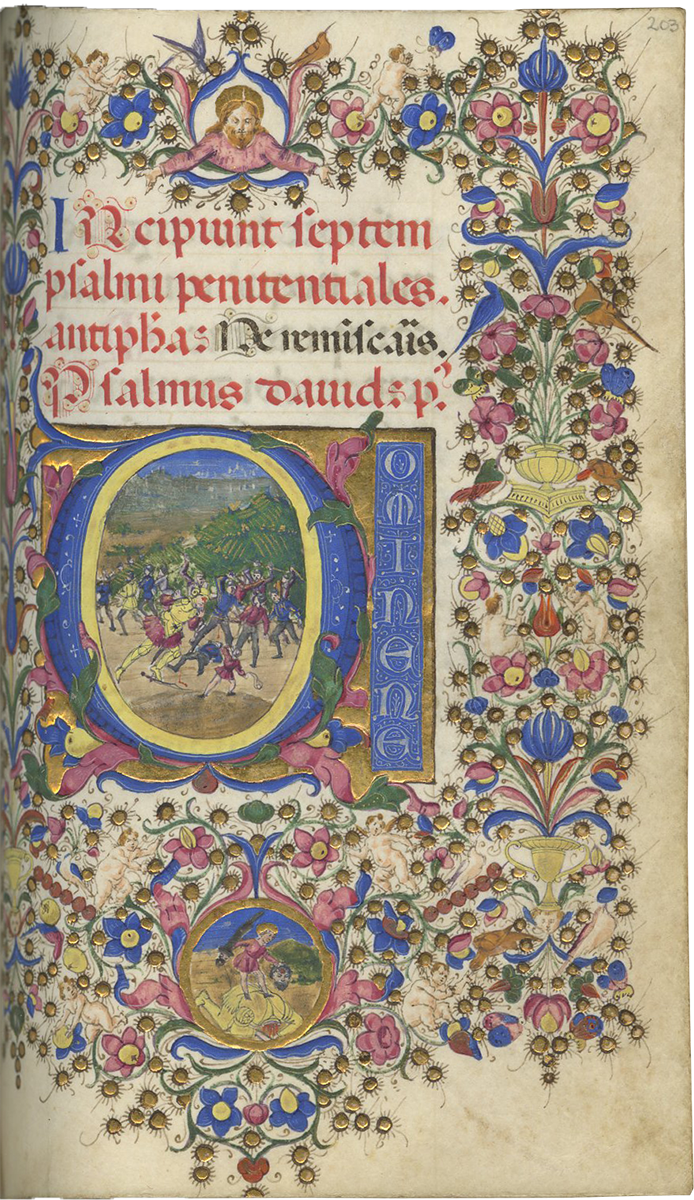
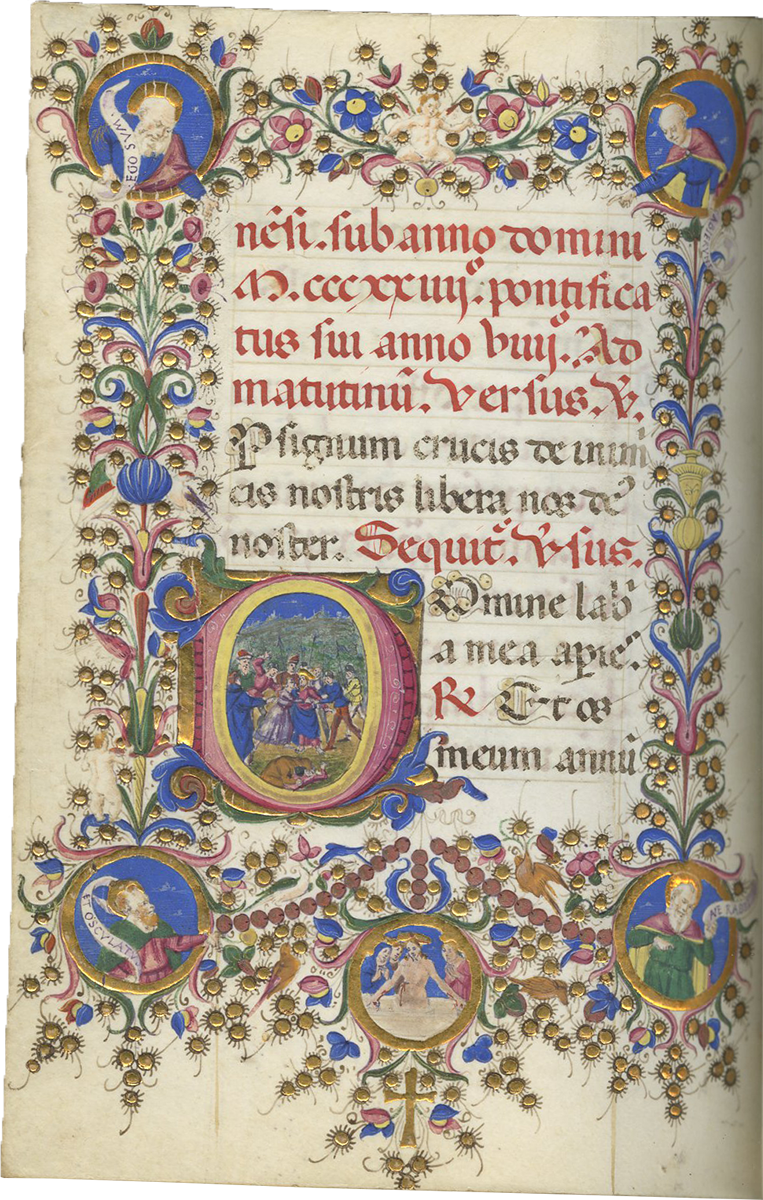
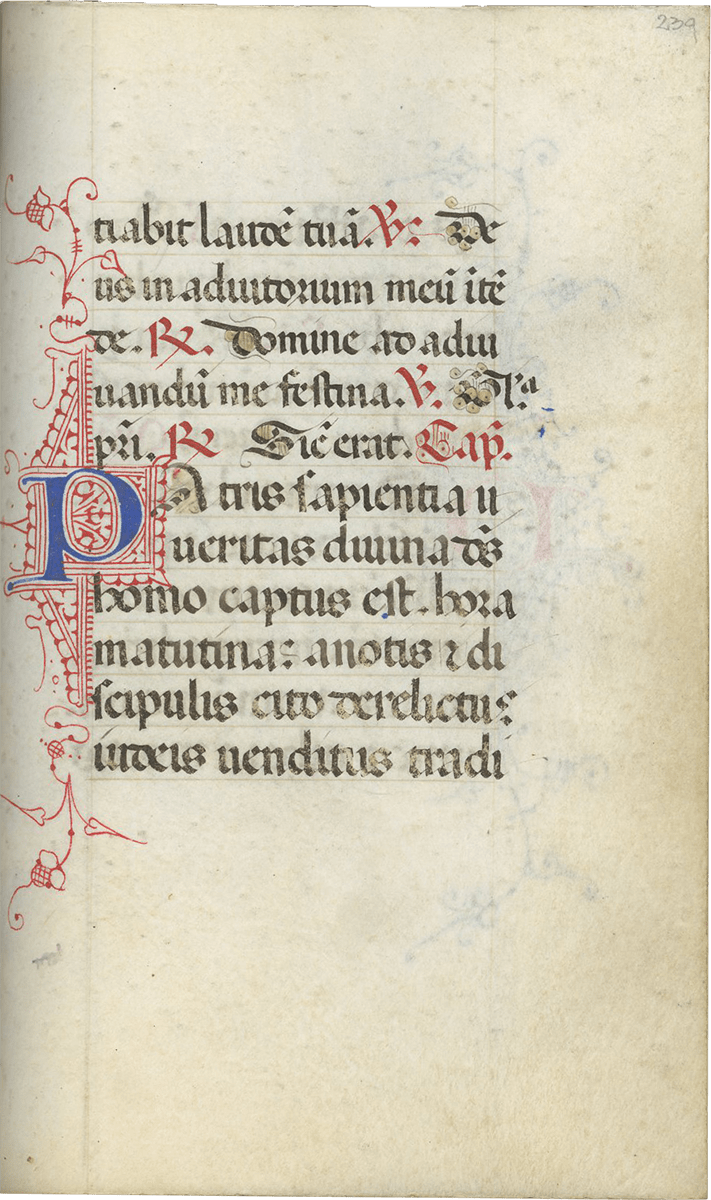
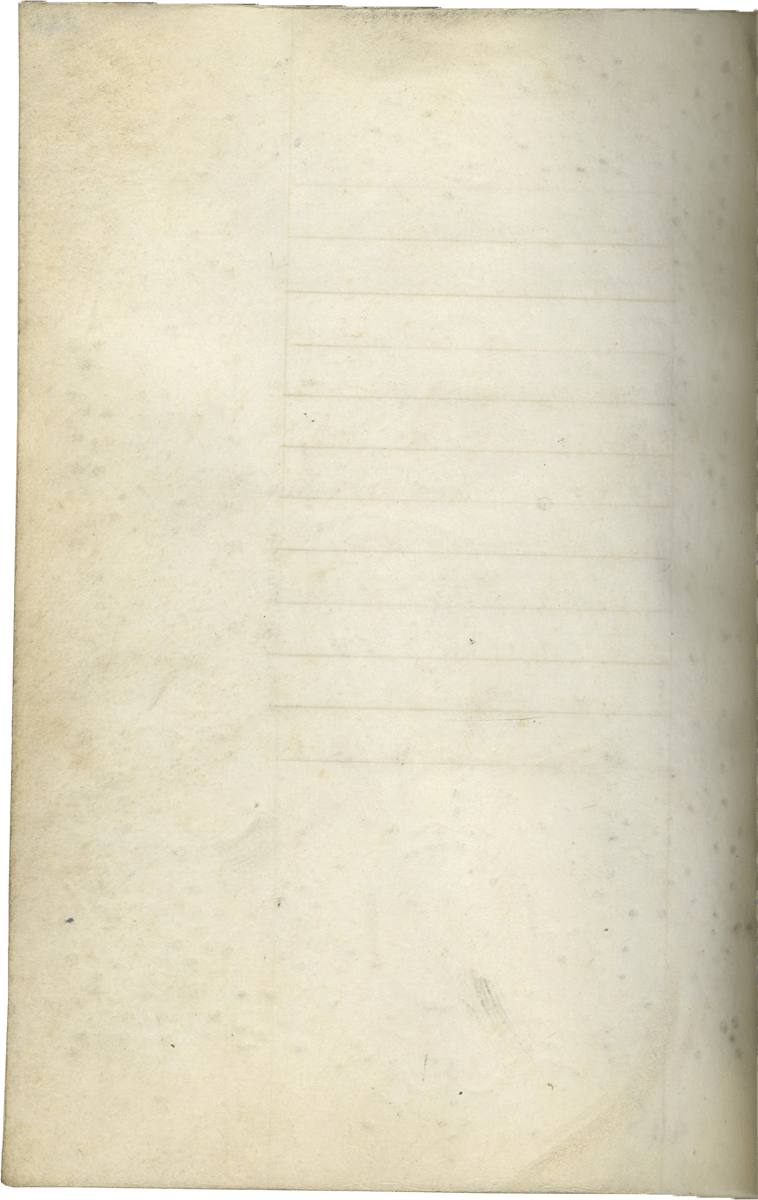
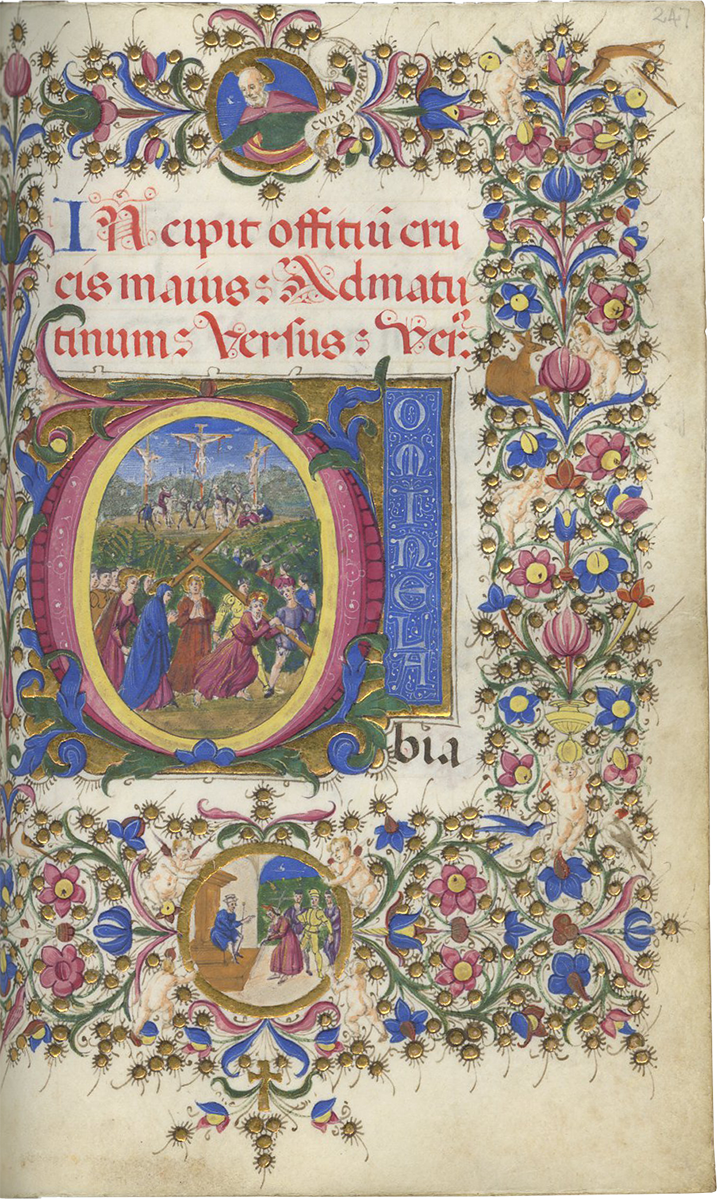

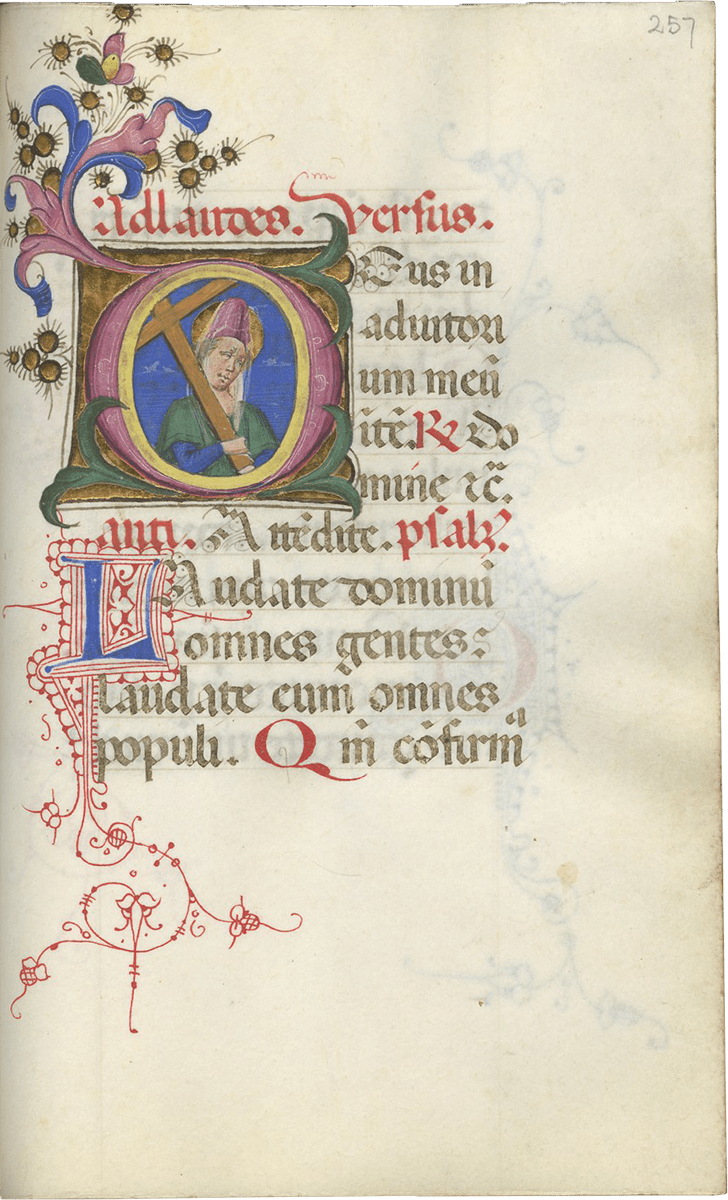
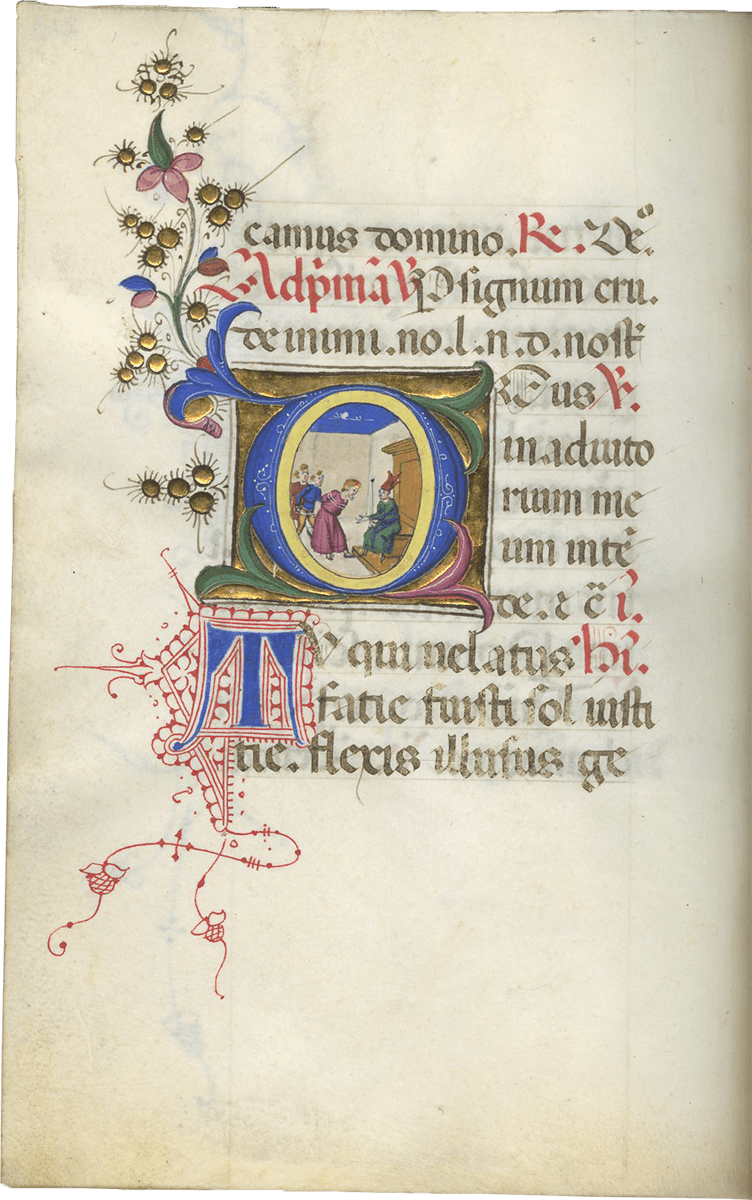
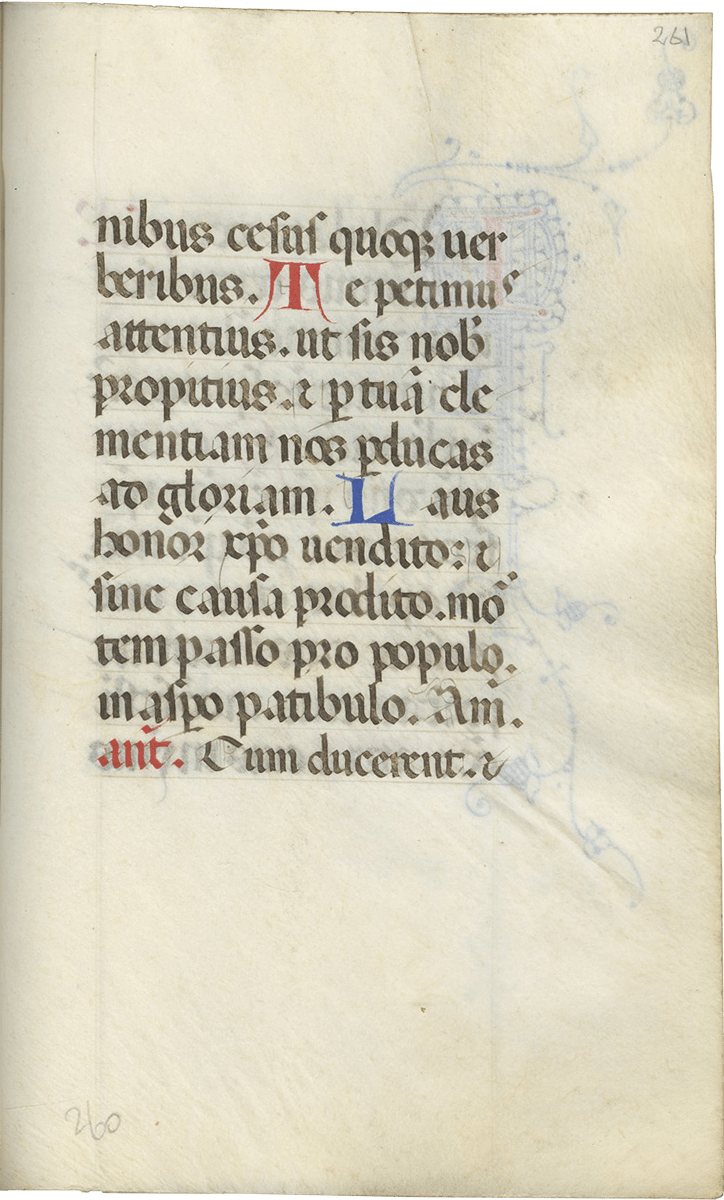


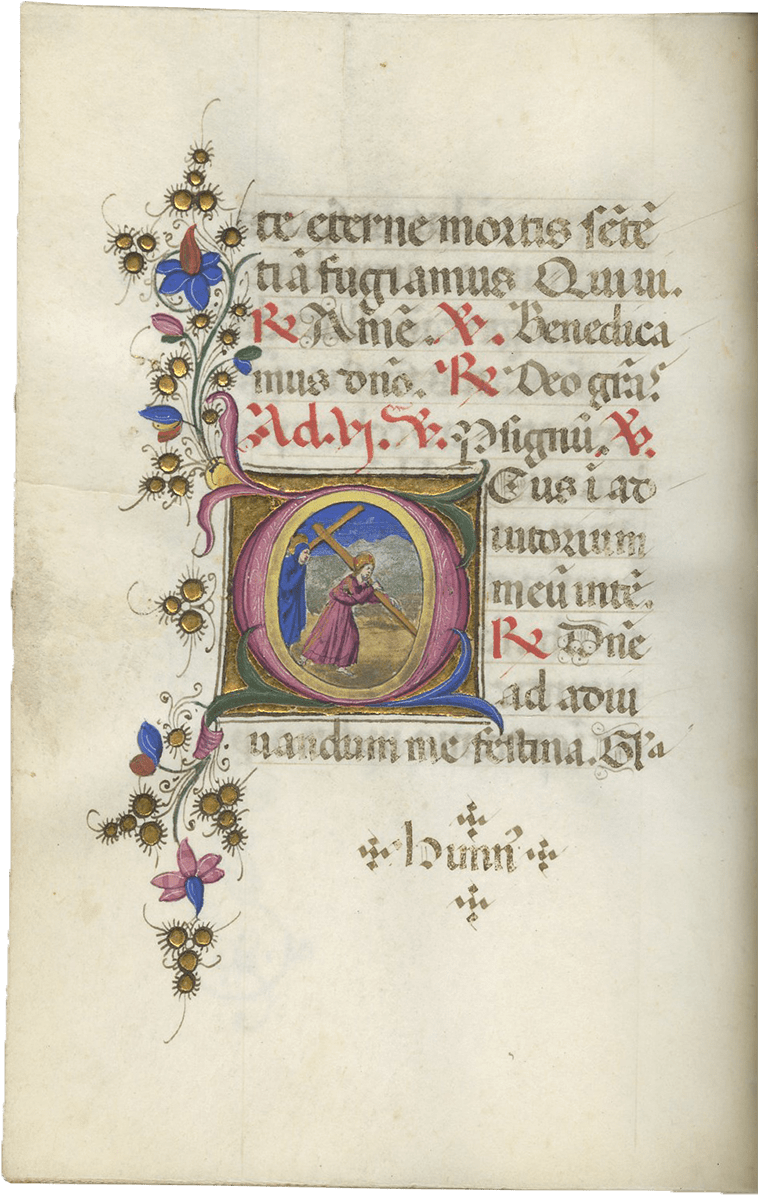
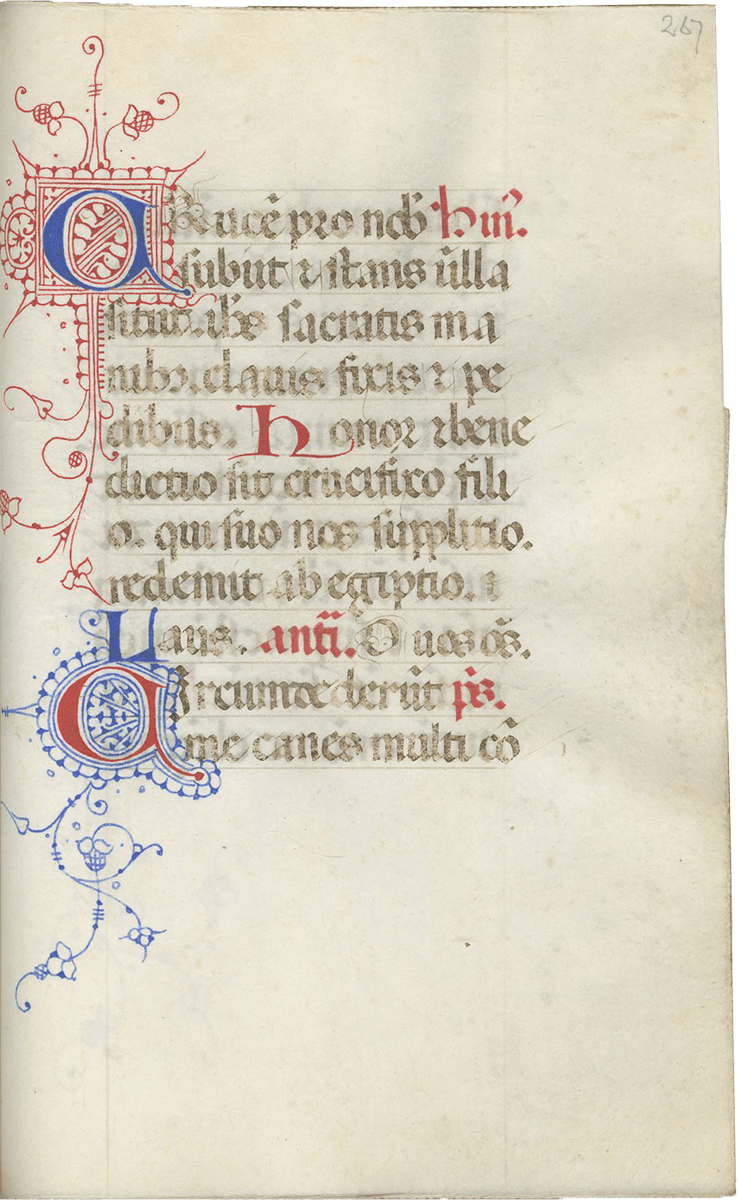

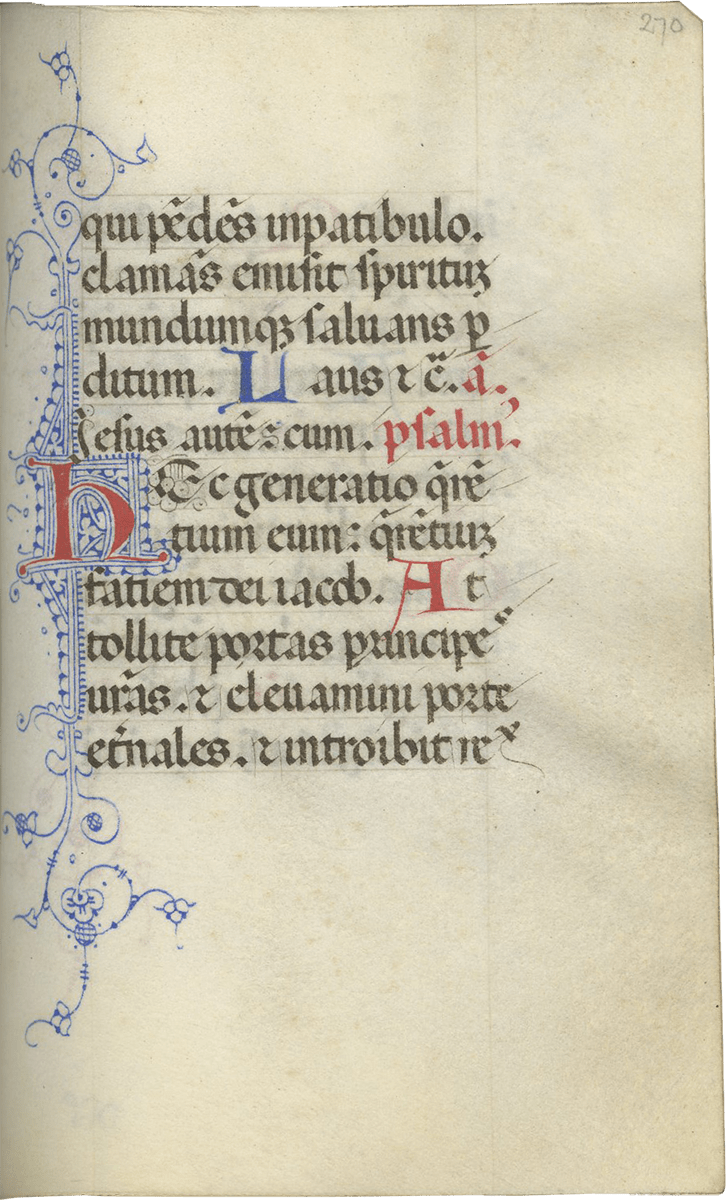
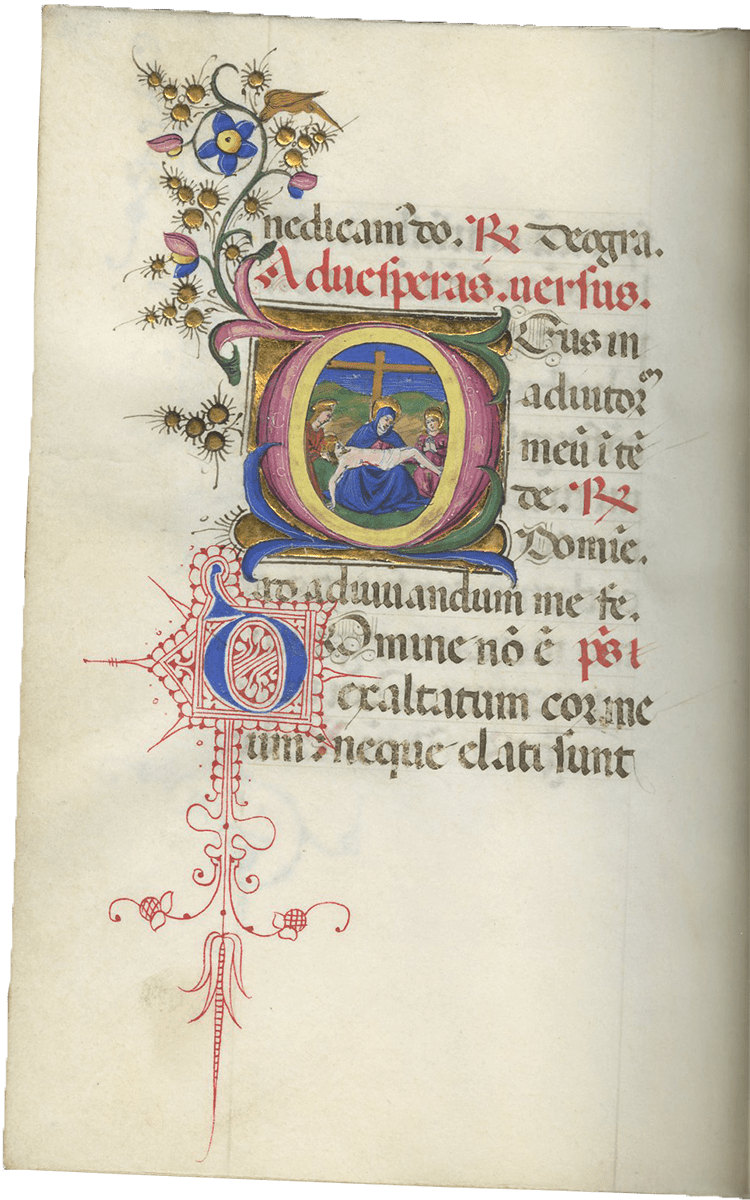

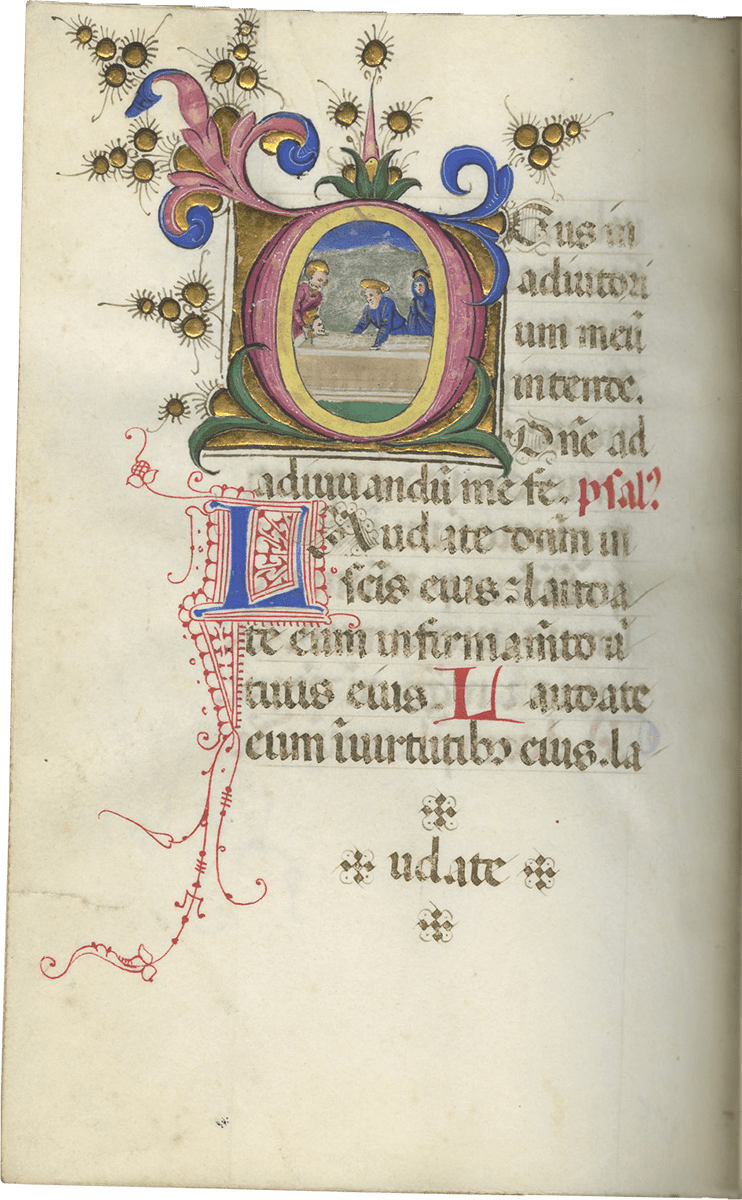


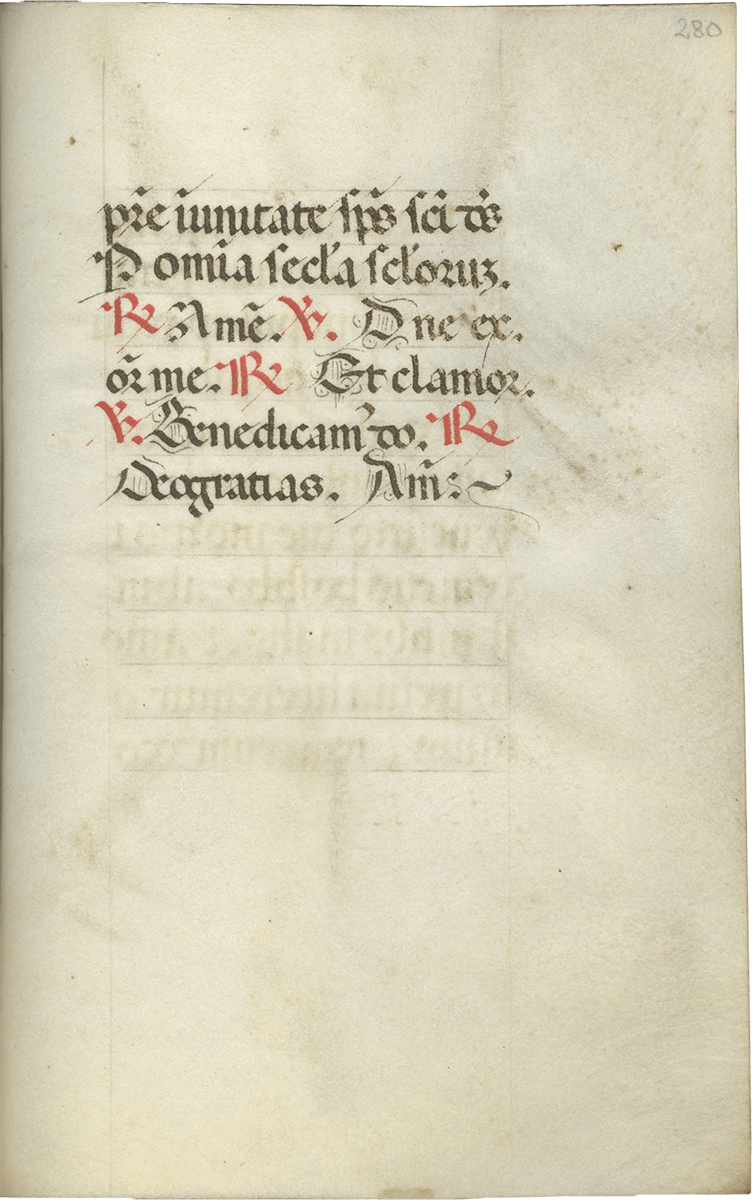
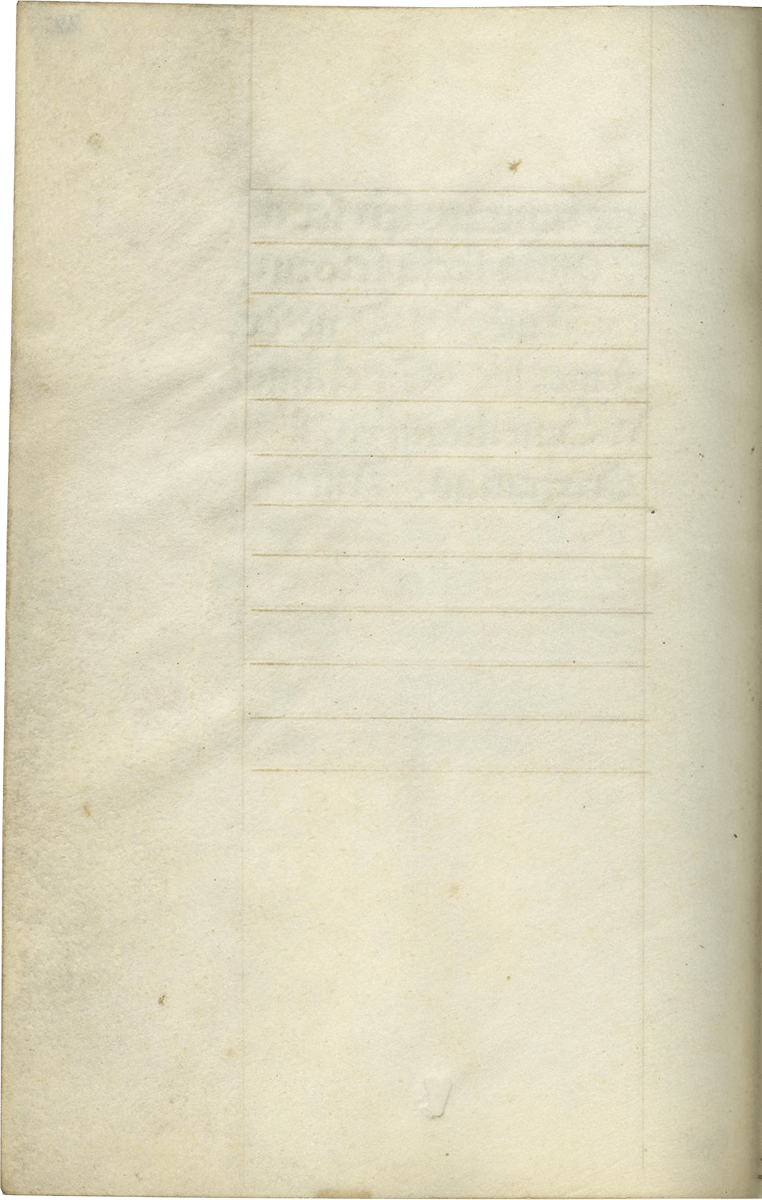
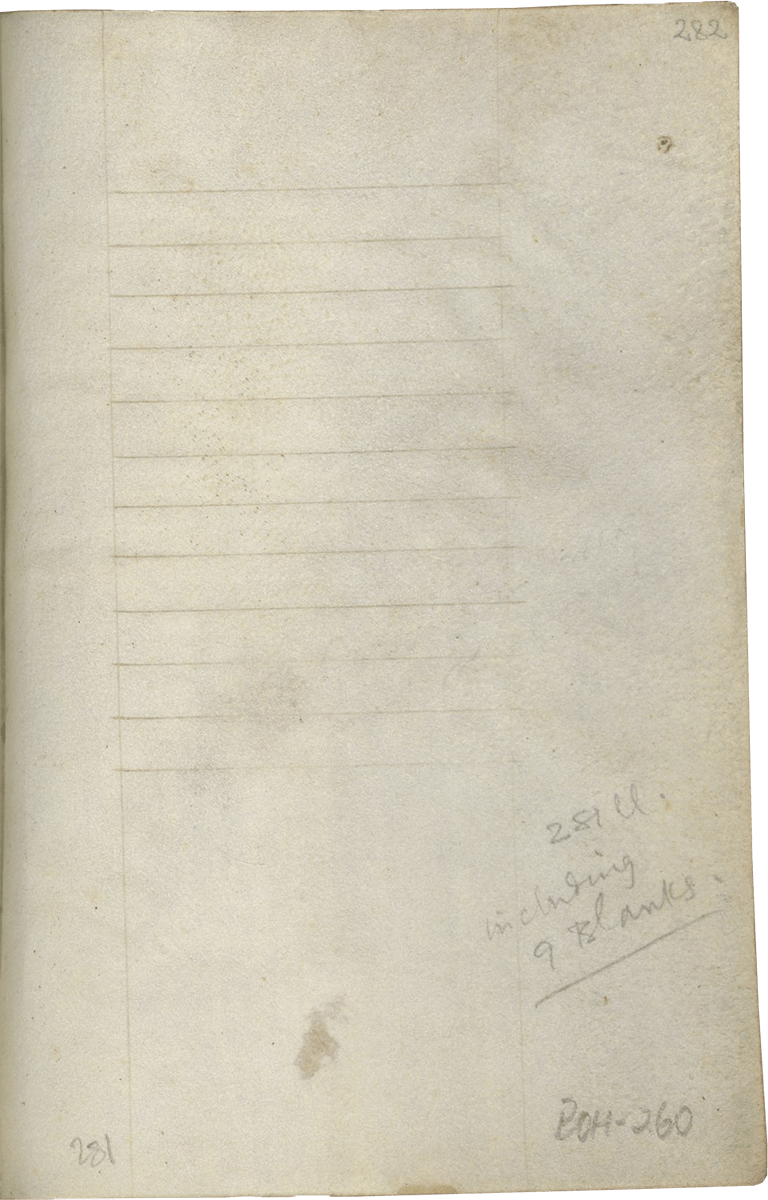
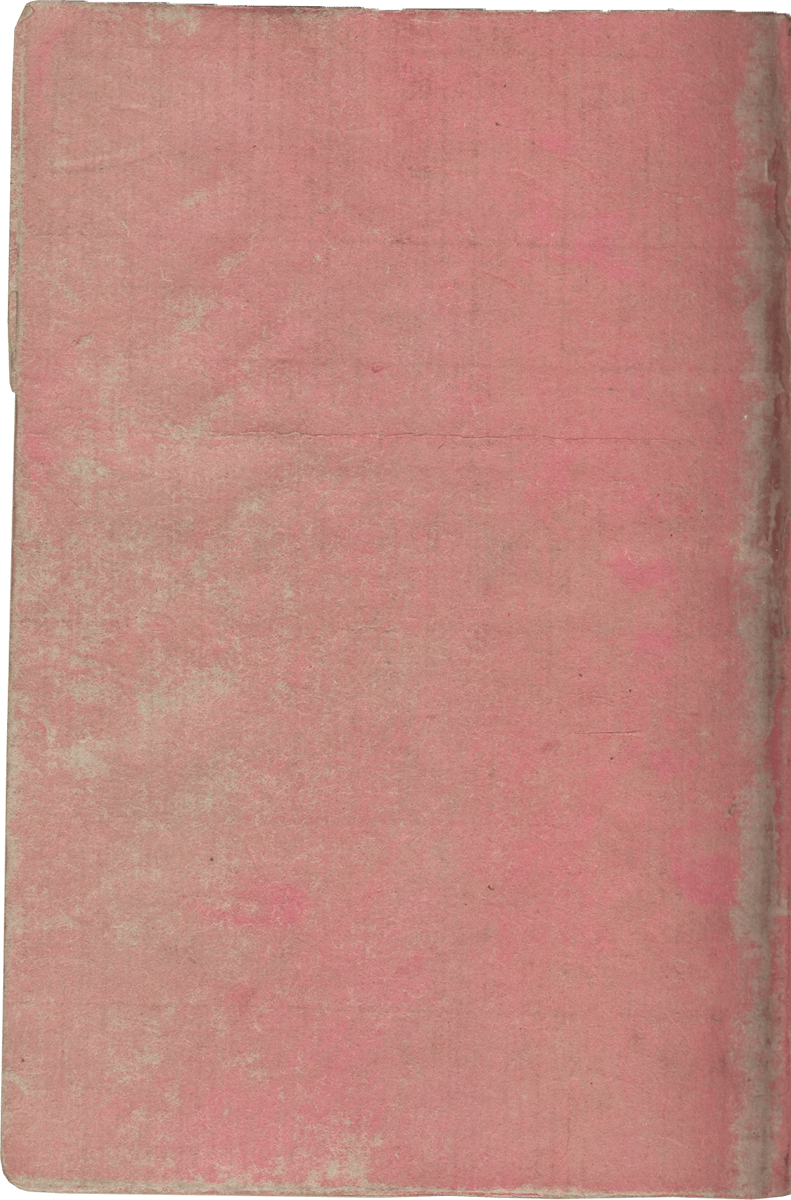

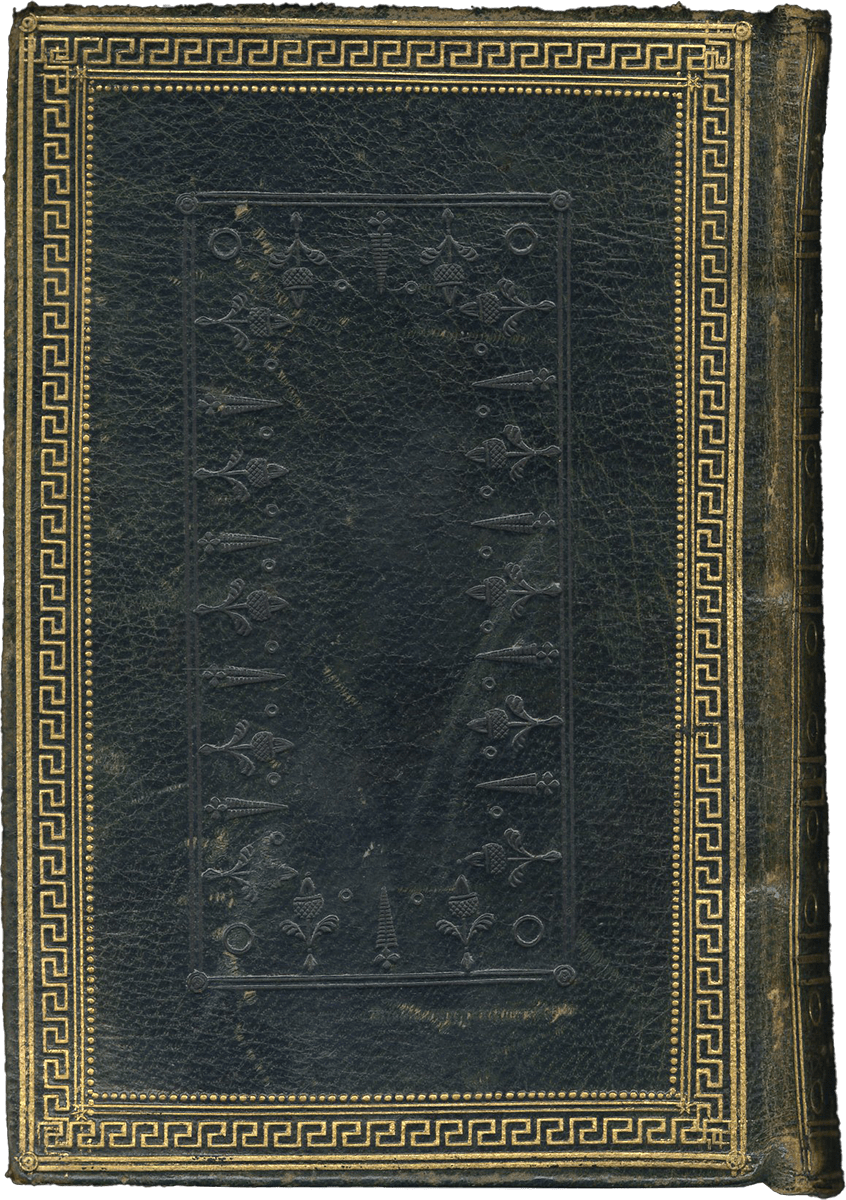
Description
Richly illuminated Book of Hours with an unprecedented and strikingly beautiful series of illuminations in which miniscule figures are executed with painstaking detail, often in large empty landscapes or crowded street scenes and surrounded by lush gold decoration. This is a virtuoso performance by a goldsmith-turned illuminator, Francesco del Chierico, pictures which he could have done only with magnification. Was his intention simply to make readers marvel at his prodigious skill or, also, to change the very nature of devotion when image-gazing?
282 leaves (10 blank), complete, collation: i14 , ii-xix10 , xx8, xxi-xxiv10 , xxv4, xxvi-xxviii10 , xxix6, with horizontal catchwords in calligraphic cartouches, 11 lines, ruled in pale brown ink, written-space 58mm. by 44mm., written in dark brown ink in two sizes of a rounded gothic hand, rubrics in red, capitals with calligraphic flourishes and touched in yellow, versa/ initials in red or blue, 2 line initials throughout in blue or bright red with very fine penwork in the contrasting color extending the full height of the pages, FOURTEEN LARGE HISTORIATED [INITIALS, 5 lines high, in very fine leafy designs in full colors on highly burnished gold grounds with partial or full length illuminated borders of very fine leafy and classical designs in colors with tiny highly burnished gold bezants in delicate brown penwork, FIVE VERY LARGE HISTORIATED INITIALS WITHIN FULL HISTORIATED BORDERS, one initial 4 lines high (fol.238v), all others full-width and rather more than half page in size with the opening letters of text in white capitals on vertical panels to the right, the borders including flowers, vases, birds, animals, putti, etc., with burnished gold roundels enclosing small miniatures, very slight spots of rubbing and thumbing to extreme edges of major illuminated pages, other negligible spots of wear, generally in extremely fine fresh condition with wide clean margins. Bound in early nineteenth-century English dark blue morocco gilt, spine in compartments gilt with title "MISSALE," pink paper endleaves, yellow silk markers, edges gilt and gauffered, binding a bit worn, headband nearly broken, in a fitted blue cloth slipcase. Dimensions 126 x 85 mm.
PROVENANCE
1. Written and illuminated in Florence. The Calendar includes St. Zenobius “episcopus florentini” (25 May) and SS. Donatus (7 August, bishop of Arezzo) and St. Reparata (8 October, relics in Florence).
2. Sir John James Smith (1800-1862), 3rd baronet, with his nineteenth-century armorial bookplate as baronet (therefore acquired 1852-62); by descent to the sixth baronet, Sir William John Smith-Marriot (1870-1941); his sale at Sotheby’s London, 31 July 1928, lot 43, to Tregaskis.
3. Eric George Millar (1887-1966), bought from Tregaskis, 31 July 1928, see his autograph note on the first flyleaf; no.52 in D.H. Turner, “List of the Medieval and Renaissance Manuscripts owned by Eric Millar,” The British Museum Quarterly 33 (1968), p.15.
4. Private Collection, UK, purchased by the owner's father probably from Messrs.Breslauer, possibly from the library of Wilfred Merton (1889-1957).
5. Sotheby’s London, 18 June 1996, lot 70;
6. Private European Collection.
TEXT
ff. 2-14, Calendar;
ff. 15-101v, Hours of the Virgin (use of Rome), "secundum consuetudinem romane curie" with Matins (f.15), Lauds (f. 30), Prime (f. 49), Terce (f. 56v), Sext (f. 63v), None (f. 70v), Vespers (f. 78) and Compline (f. 91 v), with weekly and seasonal variants (f.101v);
ff. 135-202v, Office of the Dead "secundum curiam" (use of Rome);
ff. 203-238, Penitential Psalms and Litany;
ff. 238v-244v, Short Hours of the Cross
245-246, blank;
247- 280, Office of the Cross (major), with Lauds (f. 257), Prime (f. 260v), Terce (f. 263v), Sext (f. 266v), None (f. 269v), Vespers (f. 272v), and Compline (f. 276v) ending f. 280, “Deo gratias, Amen.”
ILLUSTRATION
The miniatures here are:
f.15, The Annunciation, set in the courtyard of a classical palace, large historiated initial; full border including 12 putti, 4 birds, a seated deer, and six roundels showing the Adoration of the Magi at the top and the Holy Monogram 'YHS' at the foot, with the Evangelists with scrolls in each of the four corners, St. Luke “missus e[st]” (Luke 1:26), St. Matthew, St. John with “verbum car[o factum est]” John 1:14) and St. Mark with “beata es vi[rgo].”
f. 30, The Visitation, set outside a classical gateway;
f. 49, The Nativity of Christ, set beside the end of the stable in a night landscape;
f. 56v, The Annunciation to the Shepherds, two figures on a path beside a meadow on a hillside;
f. 63v, The Presentation in the Temple, Simeon standing in the center with the Child, flanked by the Virgin and a maid with a basket of doves;
f. 70v, The Flight into Egypt, with the Holy Family attended by two angels;
f. 78, The Massacre of the Innocents, a soldier in yellow armour holding up the body of a child;
f. 91v, The Assumption of the Virgin, seated on a cloud within a mandorla of further clouds;
f. 135, The Triumph of Death, a winged skeleton with a scythe standing on a great chariot formed of a sarcophagus on a cart draped in purple and pulled by two oxen, driving through a barren landscape and crushing beneath its wheels people of all levels of society, large historiated initial; full border including 4 putti, 3 birds, 7 skulls, a seated deer and roundels of four figures of whom two hold scrolls, “morte mem[ento]” and “homo natus” Job 14:1);
f. 203, Uriah being killed in battle (at the instigation of King David who planned thereby to marry the new widow Bathsheba), large historiated initial; full border including 8 putti, two heads of cherubim, 8 birds, a figure of God looking down from the sky and a roundel of David killing Goliath;
f. 238v, The Betrayal, with Judas kissing Christ and St. Peter pulling out his sword to cut off the ear of Malchus; full border including 2 putti, 6 birds, a gold cross, a roundel of Christ as the Man of Sorrows standing in the Tomb with the Virgin and Stjohn, and figures of the four Evangelists each with a scroll with words from the four accounts of the Betrayal, “ego sum” (Matthew 26:25), “abierunt” (John 18:6), “ave rabbi” (Mark 14:45) and “et osculator” (Luke 22:47);
f. 247, Christ carrying the Cross, in the center of a long procession of soldiers and saints winding up a hill to Golgotha where the Crucifixion is already taking place between the two thieves, with a crowd of people at the foot of the Cross including the centurian on horseback, large historiated initial; full border including 8 putti, 5 birds, a seated deer, a gold cross and roundels of an evangelist with a scroll “cuius imperium” and of Christ led before Pilate;
f. 257, A saint holding a cross;
f. 260v, Christ before Pilate, seated in his judgment hall;
f. 263v, Christ led before Caiaphas;
f. 266v, Christ carrying the Cross, followed by the Virgin;
f. 269v, The Crucifixion, with soldiers on horseback on either side;
f. 272v, The Pieta, at the foot of the Cross;
f. 276v, The Entombment of Christ.
This is a Florentine Renaissance Book of Hours of the greatest period of Quattrocento painting, complete and in very fine condition. The illumination is attributable to Francesco d’Antonio del Chierico, not only one of the most highly regarded but also one of the most prolific Florentine manuscript illuminators active from c.1452 until his death in 1484. Francesco began as a goldsmith before changing occupations to become a successful illustrator. He was one of the pupils of Fra Angelico and became famous for being Lorenzo de’ Medici's favorite illuminator.
The illuminations are of the utmost originality; we have found no comparable manuscripts. The miniscule figures are placed in huge spaces and executed with painstaking detail. Jewel-like borders resplendent with goldleaf are filled with tiny details of birds and putti. The iconography is rich and inventive. Features include the repeated appearance of the Evangelists with quotations from each of their Gospels, the jump from the Shepherds at Terce to the Presentation at Sext without the scene of the Magi, the unusual battle scene for the Penitential Psalms, and the quite extraordinary scene of the Triumph of Death on his chariot drawn by oxen at the Office of the Dead. This is iconography taken probably directly from the Trionfi of Petrarch, a remarkable re-use of a secular scene in a Book of Hours, and it appears in another manuscript by the same artist (See London, British Library, Harley MS 5761). The Annunciation is the reverse of a model used in another Book of Hours by the artist in Florence (MS graduale edili 151, f. 1v).
LITERATURE
Unpublished; for Related literature:
Garzelli, Annarosa. “Miniatura Fiorentina Del Rinascimento. 1440-1525.” Miniatura Fiorentina Del Rinascimento. 1440-1525, vol. 1, Giunta Regionale Toscana, 1985, pp. 141–142.
Bollati, Milvia, “Francesco di Antonio del Chierico,” in Dizionario biografico dei miniatori italiani: Secoli IX-XVI, ed. by Milvia Bollati (Milan: Sylvestre Bonnard, 2004), p. 229.
ONLINE RESOURCES
Collareta, Marco; Nuttall, Paula. "Rosselli family". Grove Art Online, 2003.
doi:10.1093/gao/9781884446054.article.T073971. ISBN 9781884446054.
Garzelli, Annarosa (2003). "Francesco di Antonio del Chierico.” Oxford Art Online, 2003
doi:10.1093/gao/9781884446054.article.T029578.